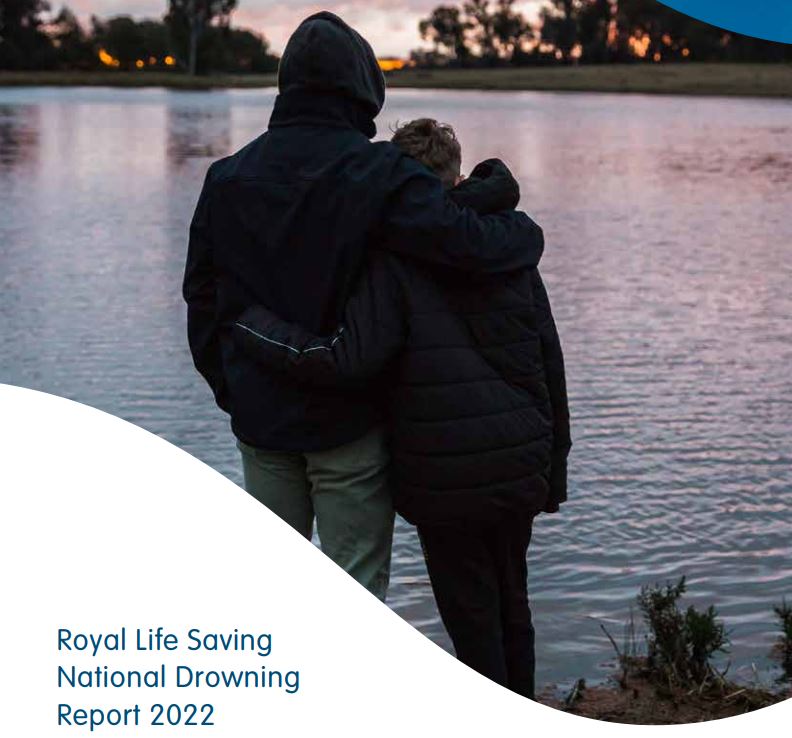National Drowning Report 2022
Every year, Royal Life Saving produces a National Drowning Report. This report examines the factors that contribute to drowning deaths in Australia by examining who, where, when and how people have drowned in Australian waterways over the last year. Royal Life Saving has produced a National Drowning Report every year since 1995.
As we present the National Drowning Report for 2022, we remain ever mindful of the people whose lives have been lost or impacted by drowning, including the many families affected by the loss or long-term injury of a loved one.
This report presents our analysis of fatal and non-fatal drowning across Australia between 1st July 2021 and 30th June 2022. During this time, 339 people lost their lives to drowning and we estimate a further 686 people experienced a non-fatal drowning incident.
In Queensland, there was 84 drowning deaths which is an increase of 25%, and an increase of 27% on the ten year average. View the Queensland summary here.
Queensland
Drowning deaths in Queensland rose by 25 per cent last year, the new Royal Life Saving National Drowning Report 2022 has revealed.
Almost a third of the 84 people who lost their lives drowned in flood-related incidents.
Queensland’s spike in drowning deaths contributed to the highest drowning toll in Australia in 25 years, prompting water safety experts to issue an urgent plea to make safety a focus this summer.
Royal Life Saving Society – Queensland State Manager Education and Training Nikki Thornhill said the deaths were a tragedy that affected countless families, friends and communities.
“Our hearts go out to all those who are mourning the loss of someone to drowning this year,” Ms Thornhill said.
“With predictions for another La Niña summer, Royal Life Saving is urging people to be aware of the weather conditions and avoid driving through flood waters.
“Many Queenslanders might be surprised to learn that rivers and creeks were the dominant location for drowning, with 45 per cent of all drowning deaths occurring there.
“Alarmingly the largest number of drowning deaths occurred among people aged 25-34 years, which is different to the trend in the rest of Australia. So we’re asking that age group in particular to be aware of the risks and brush up on their water safety skills.”
The Royal Life Saving National Drowning Report 2022 found that there were 339 drowning deathsover the past 12 months, which is 15% higher than last year(295), and the highest reported figure since 1996.
While further research is needed, the findings highlight ongoing impacts of COVID‐19 on drowning risk, including Australians being more likely to visit unfamiliar, unpatrolled water locations, children lacking swimming skills necessary to enjoy the water safely due to pandemic induced lesson cancellations.
Royal Life Saving Society – Australia CEO, Justin Scarr, said he was deeply saddened by the tragic increase in drowning.
“Increased drowning deaths in school aged children is tragic and may be a sign of generational impacts of lessons missed due to COVID‐19,” Mr Scarr said.
“Swimming and water safety lessons are critical to child safety.
“We urge adults of all ages to consider the impacts of medical conditions, alcohol, and swimming ability has on their water safety.”
The Royal Life Saving National Drowning Report 2022 was released alongside the Surf Life Saving National Coastal Safety Report 2022 in Sydney on Friday 16 September 2022.
With the support of the Australian Government, Surf Life Saving and Royal Life Saving are looking at strategies ahead of the warmer months, including bringing forward water safety campaigns, delivering lifesaving services and working with governments, councils and groups across the country.
QUEENSLAND STATISTICS
- 84 drowning deaths
- This is a 25% increase on 2020/21 and a 27% increase on the 10-year average
- 77% of those who drowned were male
- 31% of drowning deaths were flood-related
- The largest number of drowning deaths occurred among people aged 25-34 years (18%)
- Rivers and creeks accounted for 45% of deaths, followed by beaches (18%)
- Non-aquatic transport was the leading activity prior to drowning (29%), followed by a fall into water (19%)




